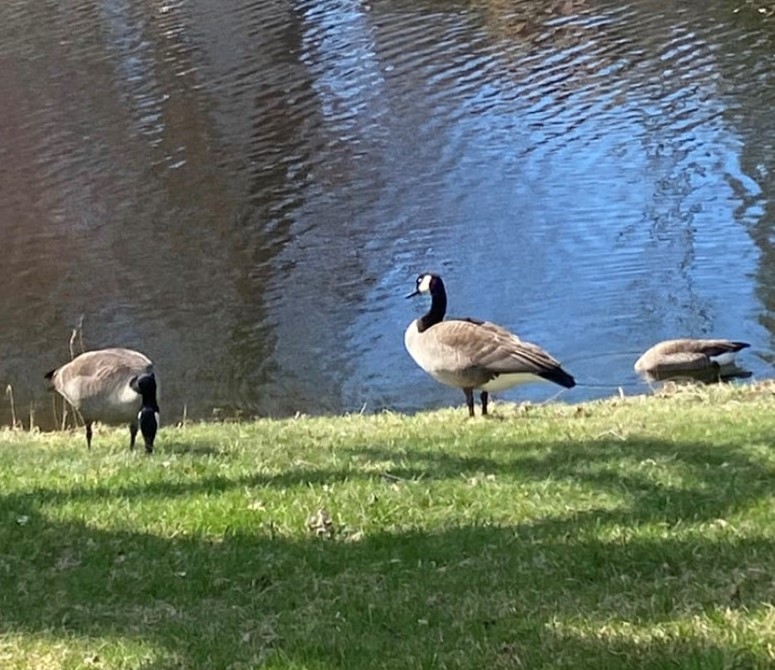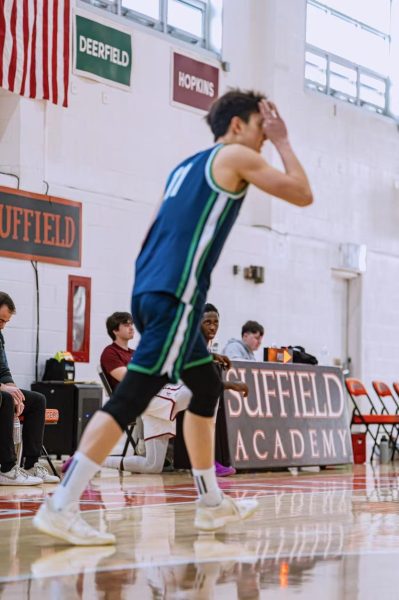What Do We Do About The Geese?
[Editor’s Note: The following is an opinion piece, and does not neccsarily reflect the views of The Willistonian.]
We all know it, and there’s no denying it: the geese are a problem.
Williston is home to a large amount of Canada geese (Branta canadensis), a species of water foul largely recognized for their stalking behaviors, disease, and rampant airstrikes. Populating Williston’s campus, specifically on the hill from the dining hall to the pond, the geese have been known to cause stress to the general Williston student population.
Adeline Hume, a senior from Easthampton, Mass., says the arrival of this new massive flock on campus is largely a mystery.
“There have always been geese on campus but in the last two years when we came back from school after we shut down, their population had at least doubled,” she said.
No official count has been taken of the geese.
Senior Tabitha Randlett, from San Francisco, Calif., is one of many who live in constant fear of the geese.
“The geese frequently invade my space and make me feel uneasy,” said Tabitha. “Their presence is very off putting, especially the ones outside of the dining hall.”
According to All About Birds, the increase in geese is our fault. Canada geese are a native species whose recent population explosion is caused by human impact on the landscape. Native to temperate regions of North America, there are more than five million breeding Canadian geese — sometimes it can feel like they’re all on campus at the same time.
Even with attempts at population control, the geese continue to multiply.
“Now, even with hunting pressure to the tune of 3.2 million geese per year in North America, the resident population continues to grow,” according to All About Birds.
Joseph Zewinski, Williston’s Grounds Manager, recognizes the amount of geese, and says the issue was actually much worse last year.
“It got really really bad in the summer,” Zewinski said. “Daily I was sending guys out to clean the sidewalk. Borderline health hazard.”
He highlighted the efforts he took to manage the problem, including the mysteries orange items floating in the pond.
“Those beacons in the pond, what they do is send off a beacon that makes the geese uneasy so they won’t be able to sleep,” he explained.
However, even that technology hasn’t beaten back the geese. “If they have a nest they won’t move on, and they didn’t,” Zewinski said. “We felt like we still had to do something.”
The school found an unusual solution to the geese problem.
“We reached out to an individual in New York who has Border Collies,” he said. “He brought two dogs with him. We had upwards to 50 to 60 [geese] — they were on the football field and in the pond. [The dogs] kind of harass the geese to move them along. It was amazing what they did to make the geese leave campus, and it was safe for the dogs and geese.”
There are however, some downfalls to this method.
“That was the trial run, the geese left and then they started coming back in the evening,” Zewinski said. “They haven’t taken up residence. It hasn’t been quite as bad right now. Next spring the dogs will come back to move them on to another pond.”
Julia Borden, President of the Animal Appreciation Club and a senior day student from Amherst, Mass., loves all animals, but understands the problem the geese pose.
“Although I appreciate all animals, I feel that sometimes when the geese get territorial around the pond,” she said, “it creates an unsafe environment for students who have to regularly cross the bridge or get to the dining hall.”











